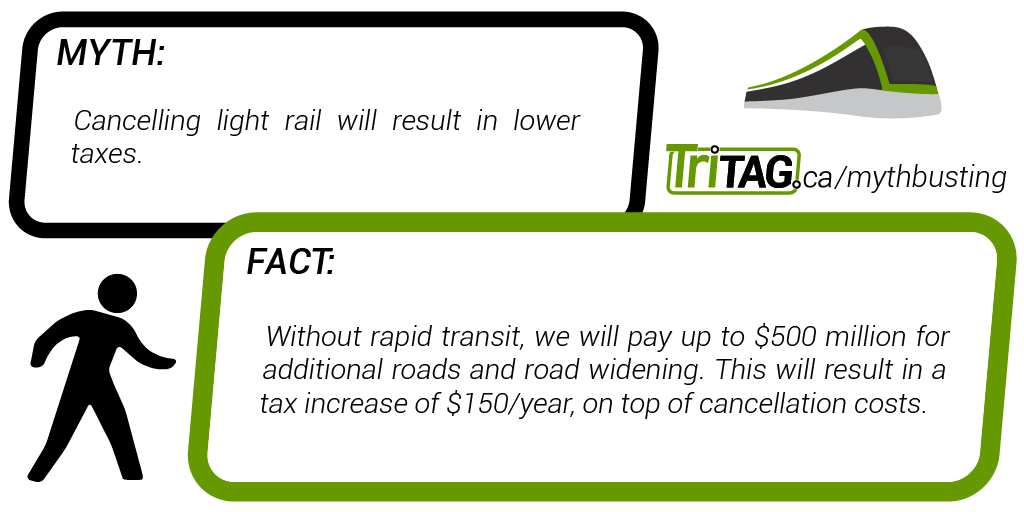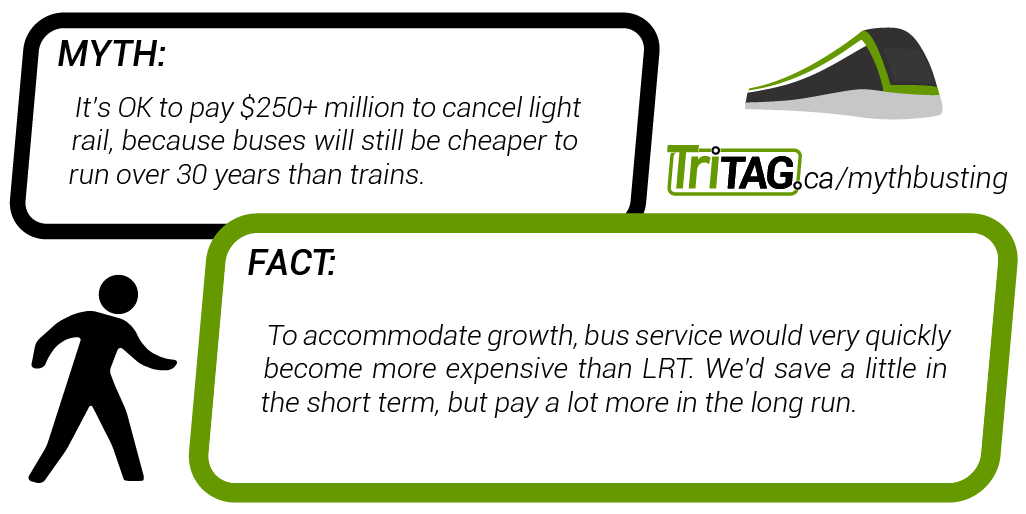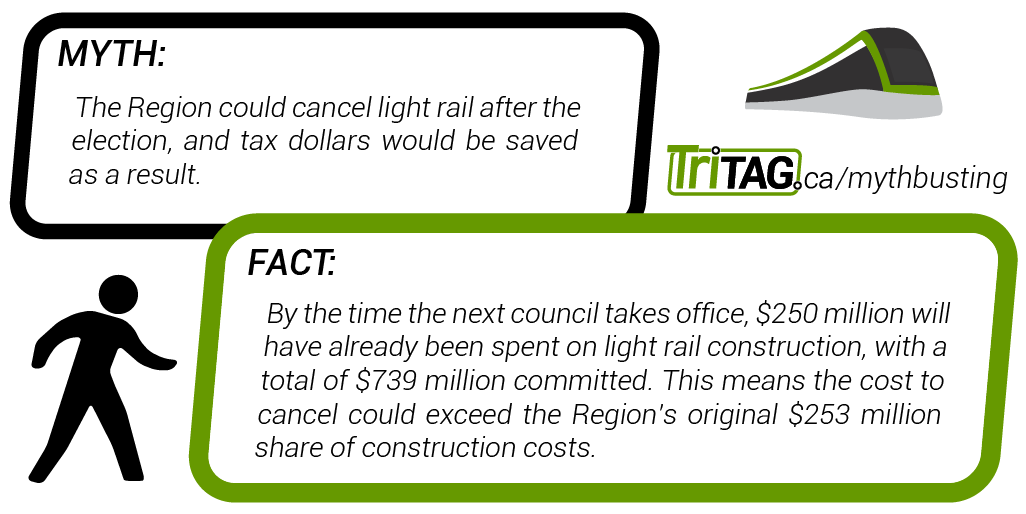Tag Archives: ION

TriTAG calls on Aissa to disclose transit plan
Municipal candidates opposed to ION light rail asked to provide details on what they would build instead
The Tri-Cities Transport Action Group is calling on regional chair candidate Jay Aissa and other municipal candidates opposed to the ION light rail project to reveal to the public what rapid transit solution they would implement as an alternative to ION. To date, TriTAG is not aware of any detailed, fully costed rapid transit plan from any candidate promising to cancel ION.
“Mr. Aissa says he has a plan for transit that is somehow both cheap and comprehensive, yet he hasn’t shown it to voters,” said Michael Druker of TriTAG. “We believe the public deserves to hear the details.”
“If Jay Aissa has the respect for voters he claims and truly believes in transparency, he will share the details of his supposed ‘plan’,” added Druker.
Specifically, TriTAG is asking Aissa and other candidates to provide details concerning:
- the form of rapid transit they would build (e.g. more iXpress buses, buses with dedicated lanes, subways, etc.);
- the route their planned rapid transit would take;
- the debt and tax impact of their plan for both capital and operating expenses, and
- the timeline for implementation of their planned rapid transit network
“If Mr. Aissa’s plan is dedicated rapid bus service for the ION route, that means more debt and higher taxes over the lifetime of the project. Ottawa has shown BRT means sky-high operating costs and a system that must be converted to light rail at huge expense,” said Taylor Byrnes of TriTAG. “The public needs to know whether Mr. Aissa’s plan can overcome both the cancellation costs for ION and high expenses to meet swelling ridership demand; or whether Mr. Aissa is just making empty promises he can’t keep.”
ION went through a decade of planning and public debate in Waterloo Region. If Mr. Aissa and other candidates want to overturn it overnight, TriTAG asks them to disclose their transit plans so voters have the weekend to scrutinize them before heading to the polls.
More TriTAG election resources:
Myth 2 Cost Estimate methodology
In debunking Myth 2, we estimated the cost of running bus service to equal ION’s ridership in 2017 to cost $23.6 million, and by 2031 to cost $52.9 million. In comparison, the operations and financing cost of ION is $30 million a year. How did we reach these figures?
We started with the current situation: transit ridership has been growing much faster than population, but roughly in proportion to the amount of transit service being provided (measured in “service hours”– the number of hours each bus is providing scheduled transit service.)
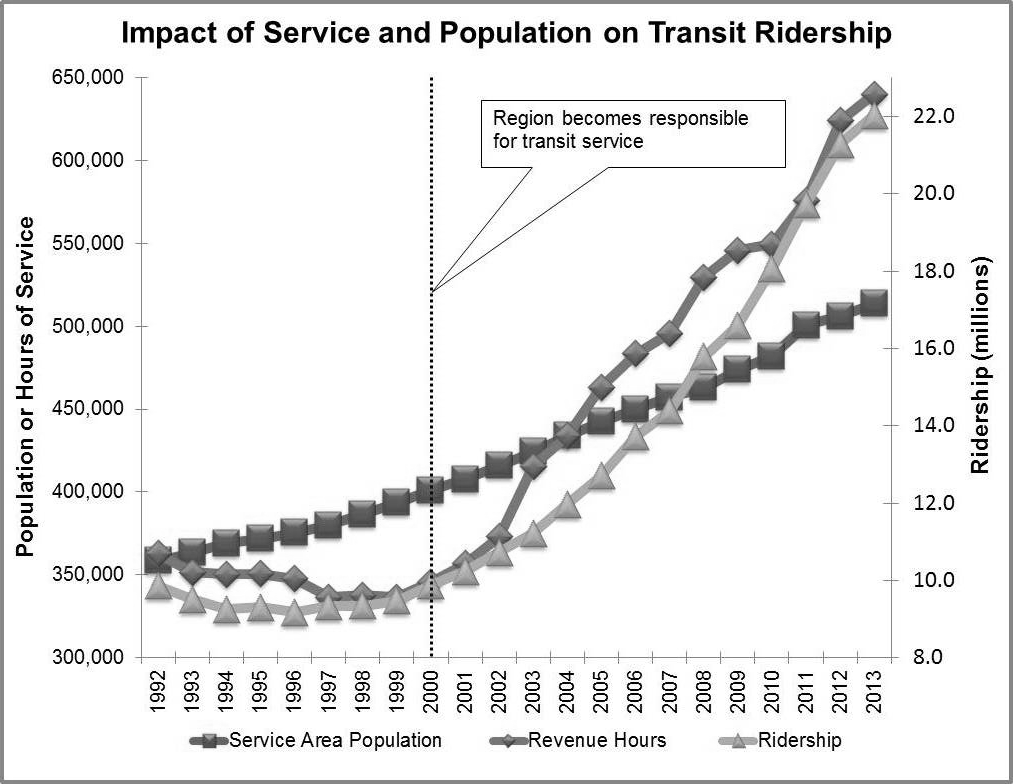 Source: Regional Transportation Master Plan progress report, Jan 2014, page 11
Source: Regional Transportation Master Plan progress report, Jan 2014, page 11
Our estimate is based on the cost of providing enough service hours for a growing ridership along the Central Transit Corridor in KW.
Cost per service hour is $138/hr for Waterloo Region in 2012 (sourced from the OMBI 2012 Performance Measurement Report, page 187). This figure includes amortization, meaning it accounts for the cost of the vehicle as well.
Given that we’re focusing on comparative costs for ION stage 1, all numbers for 200 iXpress have been limited to the Kitchener-Waterloo portion only.
Ridership targets for ION are 25,000 (2017) and 56,000 (2031). passengers per day. (Source) Central transit corridor ridership (route 7 and route 200 KW only) was 20,000 in 2013.
Our cost estimate for serving 20,000 passengers is $18.9 million. Spreadsheet.
Because the central transit corridor bus frequency is already driven by ridership, and peak time buses are routinely full, supporting further ridership requires a higher number of buses.
- Cost of supporting 25,000 riders = ($18.9M / 20,000) * 25,000 = $23.6M
- Cost of supporting 56,000 riders = ($18.9M / 20,000) * 56,000 = $52.9M
Given that operator hours (i.e. wages) drive a significant part of service hour costs, we could possibly reduce this figure by introducing higher capacity buses (such as articulated buses.) However, our observation from the OMBI report is that Ottawa’s service hour cost is higher partly because they use higher capacity buses.
Myth #2: “LRT will cost more to operate than buses”
Myth #1: “We can save money by cancelling LRT”
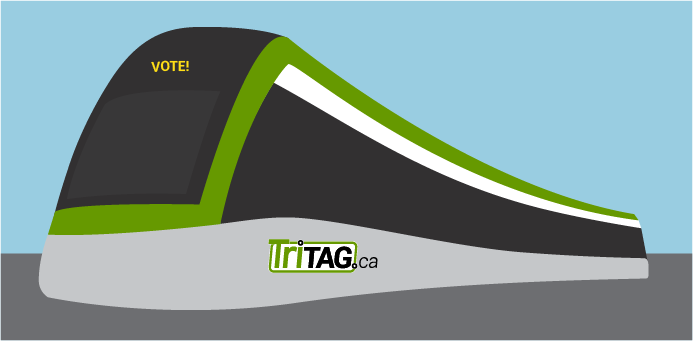
Mythbusting the election: A week-long series
Monday: Myth #1 “We can save money by cancelling LRT”
Tuesday: Myth #2 “LRT will be more expensive to operate than buses”
Wednesday: Myth #3: “Cancelling LRT will lower your taxes.”
Thursday: Myth #4: “We will be $1.6 billion in debt by 2024.”
Friday: Myth #5: “LRT won’t benefit me.”
It’s election time in Waterloo Region, and it’s getting a bit crazy out there. While many candidates are presenting strong ideas and platforms, a few opportunists have carved out a “cancel LRT” niche, and they’re not afraid to kick the facts to the curbside to sell it. TriTAG is calling them out.
If you’ve been following us for a while, you’ll know that TriTAG has supported ION as a good plan to bring rapid transit to Waterloo Region. But we have also challenged the project team to make ION even better, sometimes being sharply critical of some decisions they have made. TriTAG wants to see ION be the best it can be: light rail will bring a lot of change to our cities, and will bring real transportation choice to many thousands of people. We have to get it right.
But change naturally has some voters concerned, and a few politicians are trying to cash in with single-issue campaigns designed to play up to people’s fears. That’s where we come in. TriTAG is going to put the myths being spread during this election to the test, to help you make your vote an informed one.
We hope you’ll join us.
Want to learn more?
- TriTAG Election Candidate Survey: Find out where candidates stand on ION and transit!
- ION’s route, animated: Think it’s just a mall to mall train? Think again.
- ION Infographic: Find out the facts about ION, and how it will benefit you.
ION progress update report
The Tri-cities Transport Action Group would like to make the following statement regarding Planning and Works Committee Report E-14-117 ION Construction – Progress Update:
TriTAG is pleased to see efforts well underway to build ION. With $739 million spent or committed by the time the next council takes office, and a further $1 billion in private investment along the Central Transit Corridor, the notion that this election is about whether or not to build light rail should finally be laid to rest.
TriTAG looks forward to hearing from all candidates about how they plan over the next four years to ensure the successful completion and operation of ION, and maximize the return on our transit investment. (more…)
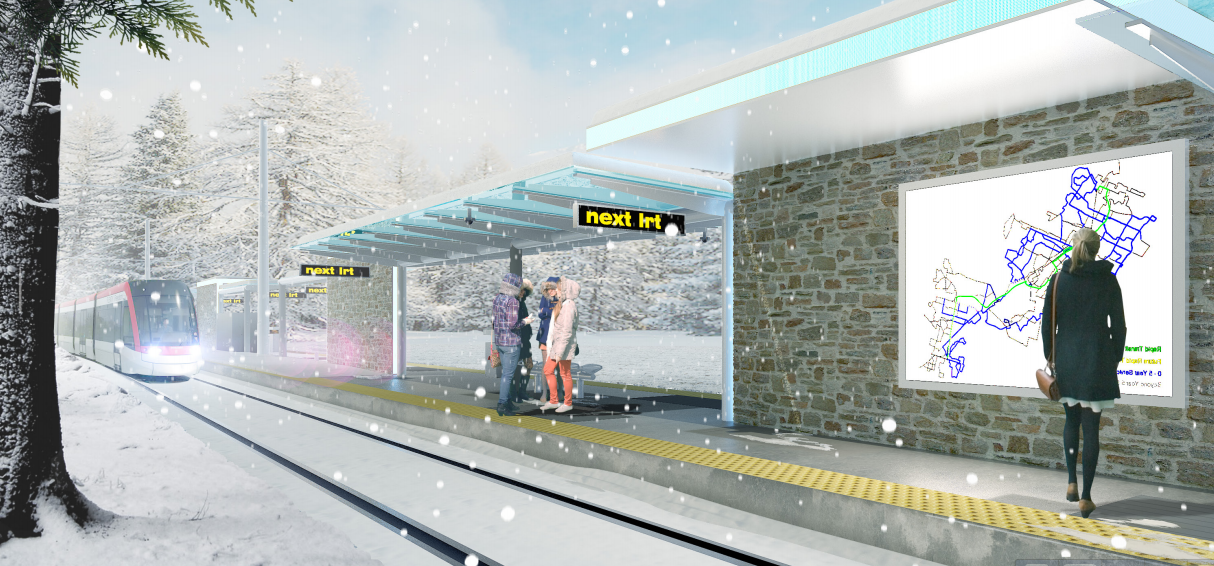
Stop design and network legibility
Recently, we looked at transit stop design for ION through the lens of branding. Today, we’d like to explore the impact stop design has on way-finding, legibility, and providing information to transit users about when to expect the next bus or tram.
Finding our way
Good way-finding cues will be critical for the integration of ION with iXpress buses and neighbourhood routes. Aside from the stop on Caroline, ION trains will have their own platforms distinct from bus stop platforms. (The aBRT stops however will be accessible by both ION and regular buses.) The Victoria Street multi-modal hub will need to allow connections between ION, iXpress, local routes, taxis, GO and VIA trains, and intercity buses. On top of all this is the fact that north- and south-bound direction stops are split by one or two blocks in both the Kitchener and Waterloo downtowns. Planners will need to be proactive in ensuring that the experience of the Grand River Transit network is a seamless one. (more…)

Weekend reading
Two articles caught our attention this week that we thought worth sharing.
How Design Can Help Build a ‘Transit Culture’ – Eric Jaffe, The Atlantic Cities
Increasingly, transit agencies are realizing the importance of the user experience and public perception to ridership. TriTAG has long maintained that bus-wrap ads not only make taking transit unpleasant, but they also severely dilute GRT’s brand into rolling advertisements. We’re hopeful that wrap ads never appear on the ION, and that the Region eventually realizes how much brand-value is lost by covering up entire sides of their buses. (more…)
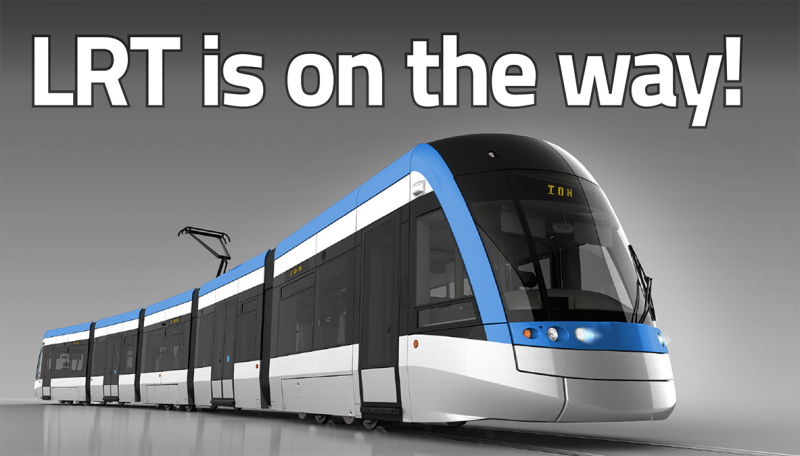
INFOGRAPHIC: LRT is on the way!
What is LRT? Why is it being built? How will it affect the community? When and where can I ride it?
ION Light Rail Transit (LRT) is the solution Waterloo Region needs to manage our growth, connect our region, and ensure a prosperous future. After a decade of study and public consultation, it’s time to move forward, and time to get excited!
To celebrate ION coming up for its final formal approval and to consolidate some of the answers to frequently-asked questions, we’ve produced an infographic showing why ION Light Rail Transit is the best investment to move us around and shape our region’s future.

